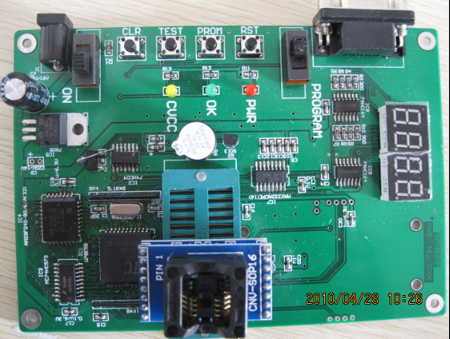With the continuous increase in the output ratio of flexible PCBs and the application and promotion of rigid-flex PCBs, it is now more common to add soft, rigid or rigid-flex when talking about PCBs, and say that it is a PCB with several layers. Generally, a PCB made of a flexible insulating substrate is called a flexible PCB or a flexible PCB, and a rigid-flex composite PCB is called a rigid-flex PCB. It meets the needs of today's electronic products in the direction of high density and high reliability, miniaturization, and light weight. It also meets the strict economic requirements and the needs of market and technology competition.
First, the classification of flexible PCB and its advantages and disadvantages
1. Flexible PCB classification
Flexible PCBs are usually classified as follows according to the number and structure of conductors:
1.1 Single-sided flexible PCB
Single-sided flexible PCB, with only one layer of conductor, and the surface can be covered or not covered. The insulating base material used varies with the application of the product. Commonly used insulating materials include polyester, polyimide, polytetrafluoroethylene, and soft epoxy-glass cloth.
Single-sided flexible PCB can be further divided into the following categories:
1) Single side connection without covering layer
The wire pattern of this kind of flexible PCB is on the insulating substrate, and the wire surface has no covering layer. Like the usual single-sided rigid PCB. This type of product is the cheapest one, usually used in non-critical and environmentally friendly applications. The interconnection is realized by soldering, welding or pressure welding. It is commonly used in early telephones.

2) One-sided connection with cover layer
Compared with the previous type, this type only has an extra layer of covering on the surface of the wire according to customer requirements. The pads need to be exposed when covering, and it can simply be left uncovered in the end area. If precision is required, the form of clearance hole can be adopted. It is the most widely used and widely used single-sided flexible PCB, and is widely used in automotive instruments and electronic instruments.
3) Double-sided connection without covering layer
This kind of connection board interface can be connected on the front and back of the wire. In order to achieve this, a via hole is opened in the insulating substrate at the pad. This via hole can be punched, etched or made by other mechanical methods at the required position of the insulating substrate. It is used to mount components and devices on both sides and where soldering is required. There is no insulating substrate in the pad area of the via. Such pad area is usually removed by chemical methods.
4) With cover layer connected on both sides
The difference between this type and the previous type is that there is a covering layer on the surface. However, the cover layer has via holes, which allows termination on both sides and still maintain the cover layer. This kind of flexible PCB is made of two layers of insulating materials and a layer of metal conductors. It is used in the occasions where the covering layer and the surrounding devices need to be insulated from each other, and the ends need to be connected to both the front and back sides.
Double-sided flexible PCB
Double-sided flexible PCB with two layers of conductors. The application and advantages of this type of double-sided flexible PCB are the same as those of a single-sided flexible PCB, and its main advantage is to increase the wiring density per unit area. It can be divided into with or without metallized holes and with or without covering layer: a without metallized holes and without covering layer; b without metallized holes and covering layer; c with metallized holes and without covering layer ; D There are metallized holes and covering layers. The double-sided flexible PCB without covering layer is rarely used.